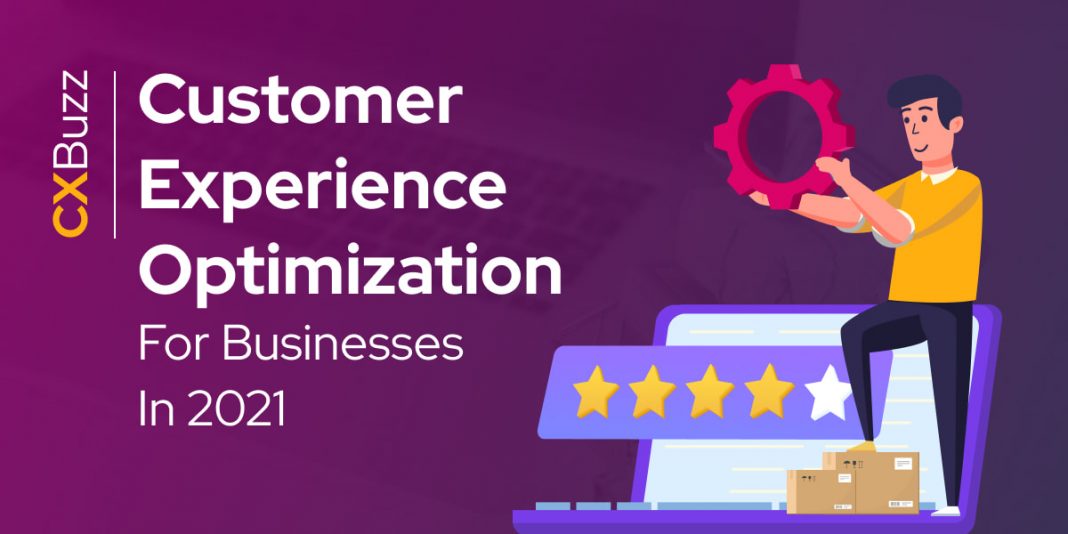Customer Experience Optimization for Businesses in 2021
Customer experience (CX) encompasses the entirety of the journey a customer might go through when purchasing a product or a service, including interactions with the company’s employees, the shopping, purchasing, and user experiences, and their perception of the brand. Customer experience optimization is the process by which you can streamline and refine the overall experience, making it easier and therefore encouraging the customers to return and spread word about your brand.
Coming into 2021, customer experience optimization is extremely important — the COVID-19 pandemic and subsequent lockdowns catalyzed the adoption of great innovations in the ways businesses interact with their customers; a lot of these innovations are here to stay.
After accessing services which make their experience more pleasant, customers are far more likely to return to those businesses that continue with these methods. From QR codes to digital appointment services, people are drawn to simpler, less time-consuming ways to go about their lives and the way they approach potential purchases is no exception.
Customer Experience Predictions for 2021
With the huge changes that 2020 brought, it’s no surprise that the CX landscape is changing. Here are some predictions for 2021.
The rise of Artificial Intelligence: Now, when you think of AI you might imagine robots with glowing eyes, or another similar menace. Don’t worry, that’s not what we’re talking about. Businesses have started using AI in small ways, from AI-powered chatbots and virtual receptionist services to automated tasks such as streamlining that help customers find what they need.
Personalization, the key to success: It’s estimated that you only have eight seconds in today’s market to grab people’s attention. Personalization of advertisements, website layout, etc. all aid in catching customers’ eyes before that crucial moment passes by. By segmenting your customer base into multiple target audiences (e.g. age brackets, city of residence), you can personalize ads and services and make each customer feel unique and understood.
Omnichannel Customer Service: Your customers, especially in the days after 2020, are using digital platforms more and more to reach out to businesses and complete their purchases. With the huge variety of devices that can be used — Apple products, Windows, Android etc. — it’s important that you be able to deliver a consistent experience across these platforms. It’s about being everywhere, at all times, so as to cast your net as wide as possible.
More on this topic: Augmented Reality, Chatbots and Artificial Intelligence: Keeping Up with e-Commerce Trends
How To Optimize Customer Experience and Why To Improve It
The first thing to keep in mind about your customer’s journey is: What steps do they take, and how can you make them aware of your product or services? Are there any channels that you could use to ensure a more streamlined approach? The ideal customer experience tends to follow a simple seven-step pattern as a rule:
Awareness -> Attraction -> Adoption -> Purchase -> Use -> Service -> Advocacy
Understanding your customers and how they interact with you will aid you greatly. For instance, a large percentage of customers expect proactive engagement, which you’ll be missing out on if you don’t have a channel by which they can engage.
You also need to think about the way in which customers see your services. For example you might have a website that is laid out neatly and orderly which will qualify as functional and accessible, but if it’s drab and dull that might taint the customer experience. Remember, emotion is key in attracting and retaining customers. People want to feel valued, like you know them personally.
Challenges Involved
Optimizing your customer experience can be a big challenge. One of the greatest hurdles to overcome is simply a lack of strategy. 2020 brought huge changes to businesses that we don’t yet fully know the implications of.
Data collection is easy enough, but knowing what to do with that data is another story. You need to decide what data is relevant for you to have, how to analyze it and what to do with the trends it shows. Consistent customer experience is completely rooted in data, but paradoxically the wider your scope the more inconsistent it gets.
Tools To Use To Optimize Customer Experience
Some of the best tools in today’s market come in the form of CX software packages, such as Salesforce and Zendesk. These are flexible CX software services that enable you to tune your customers’ support to their needs in a more direct approach – live chats, personalization, etc.
There’s also software packages that work behind the scenes, such as Qualtrics and Medallia — AI-based analytics tools that will allow you to sift through customer data and identify trends or weak spots in your services.
All of these tools can give a constantly-updating view on how your business is performing, much more efficient than attempting to analyse by hand. However, you shouldn’t underestimate the old-fashioned methods such as reviews, suggestion boxes etc., as these can sometimes give more in-depth insight that AI looking for wider-scope trends might pass over.
Examples of Great Customer Experience
Discover has scored at the top of credit card giants, ranking highly in both satisfaction and loyalty. The key to their approach is speed, as they usually take less than five minutes to respond to online queries, whilst also having a wide range of customer service platforms for customers to choose from.
Microsoft took a big risk in the early 2000s when it switched to a B2B collaborator, however this paid off massively as it allowed for customers to customize their products in ways that had not been possible before.
Warby Parker made great use of the “always follow the customer” approach, surveying and tracking feedback which has made for some great adaptations. They initially just sold glasses, but widened their approach to include sunglasses, then later specially adapted glasses for people with irregular face shapes. They’ve also integrated technology with their Try-On app as far back as 2019.
Conclusion
Customer experience is a blanket term for a wide variety of events that customers go through when going through the process of completing a purchase. A good customer experience is a speedy, personalized one, every step of the way.






